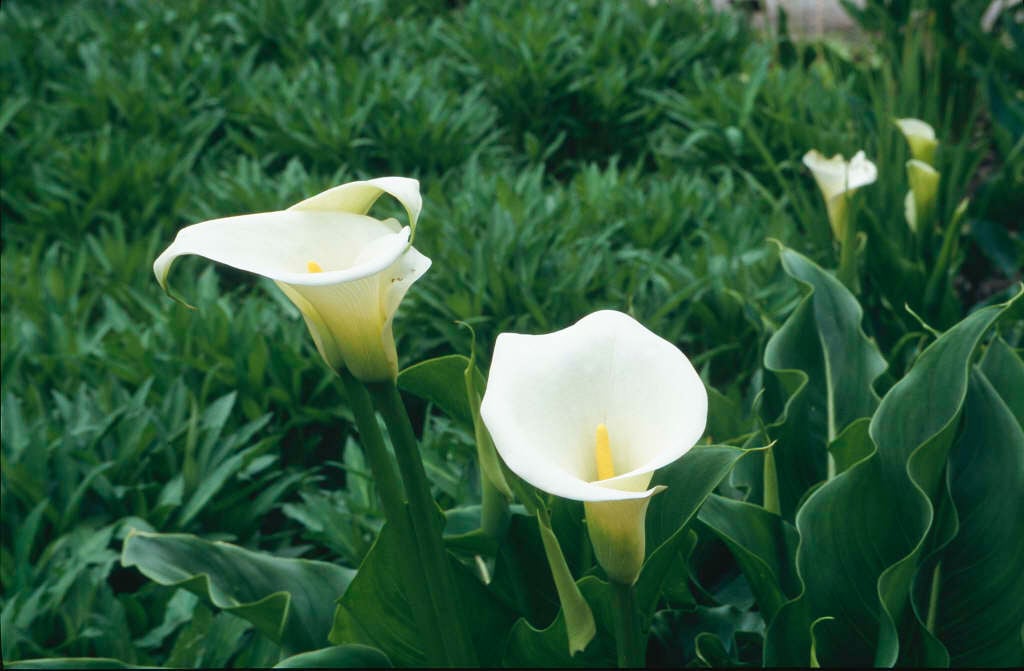Zantedeschia aethiopica
arum lily
A clump-forming herbaceous or semi-evergreen perennial with erect, long-stalked, dark glossy green, arrow-shaped leaves to 40cm in length and funnel-shaped white spathes to 25cm in length, with yellow spadices
Other common names
altar lilycalla lily
see morerichardia
trumpet lily
white arum lily
African lily
Egyptian lily
lily of the Nile
Synonyms
Brosimum aethiopicaCalla aethiopica
Size
Ultimate height
0.5–1 metresTime to ultimate height
5–10 yearsUltimate spread
0.1–0.5 metresGrowing conditions
Moisture
Poorly–drainedpH
Acid, Alkaline, NeutralColour & scent
| Stem | Flower | Foliage | Fruit | |
| Spring | White Yellow | Green | ||
|---|---|---|---|---|
| Summer | White Yellow | Green | ||
| Autumn | Green | Orange | ||
| Winter |
Position
- Full sun
- Partial shade
Aspect
West–facing or South–facing
Exposure
Sheltered Hardiness
H4Botanical details
- Family
- Araceae
- Native to GB / Ireland
- No
- Foliage
- Deciduous
- Habit
- Clump forming
- Potentially harmful
- Harmful if eaten, skin/eye irritant. Wear gloves and other protective equipment when handling. Pets: Harmful if eaten, skin/eye irritant - for further information and contact numbers regarding pets, see the HTA guide to potentially harmful plants
- Genus
Zantedeschia can be deciduous or semi-evergreen, tuberous perennials with lance-shaped or arrow-shaped leaves and tiny yellow flowers forming a dense spike-like spadix, with a showy, hood-like spathe, sometimes followed by orange berry-like fruits
- Name status
Correct
- Plant range
- S Africa, Lesotho
How to grow
Cultivation
Grow outdoors in full sun or part shade in moisture-retentive soil; in containers planted in peat-free John Innes No2 potting compost or can also be grown as a marginal plant in water up to 30cm (1ft) deep. Use aquatic compost and a 30cm (1ft) deep planting basket. See Zantedeschia cultivation
Propagation
Propagate by division in spring
Suggested planting locations and garden types
- Cottage and informal garden
- Sub-tropical
- Patio and container plants
- Mediterranean climate plants
- Flower borders and beds
Pruning
Tidy any foliage blackened by frosts
Pests
Diseases
May be susceptible to fungal and bacterial rots and a virus
Get involved
The Royal Horticultural Society is the UK’s leading gardening charity. We aim to enrich everyone’s life through plants, and make the UK a greener and more beautiful place.
